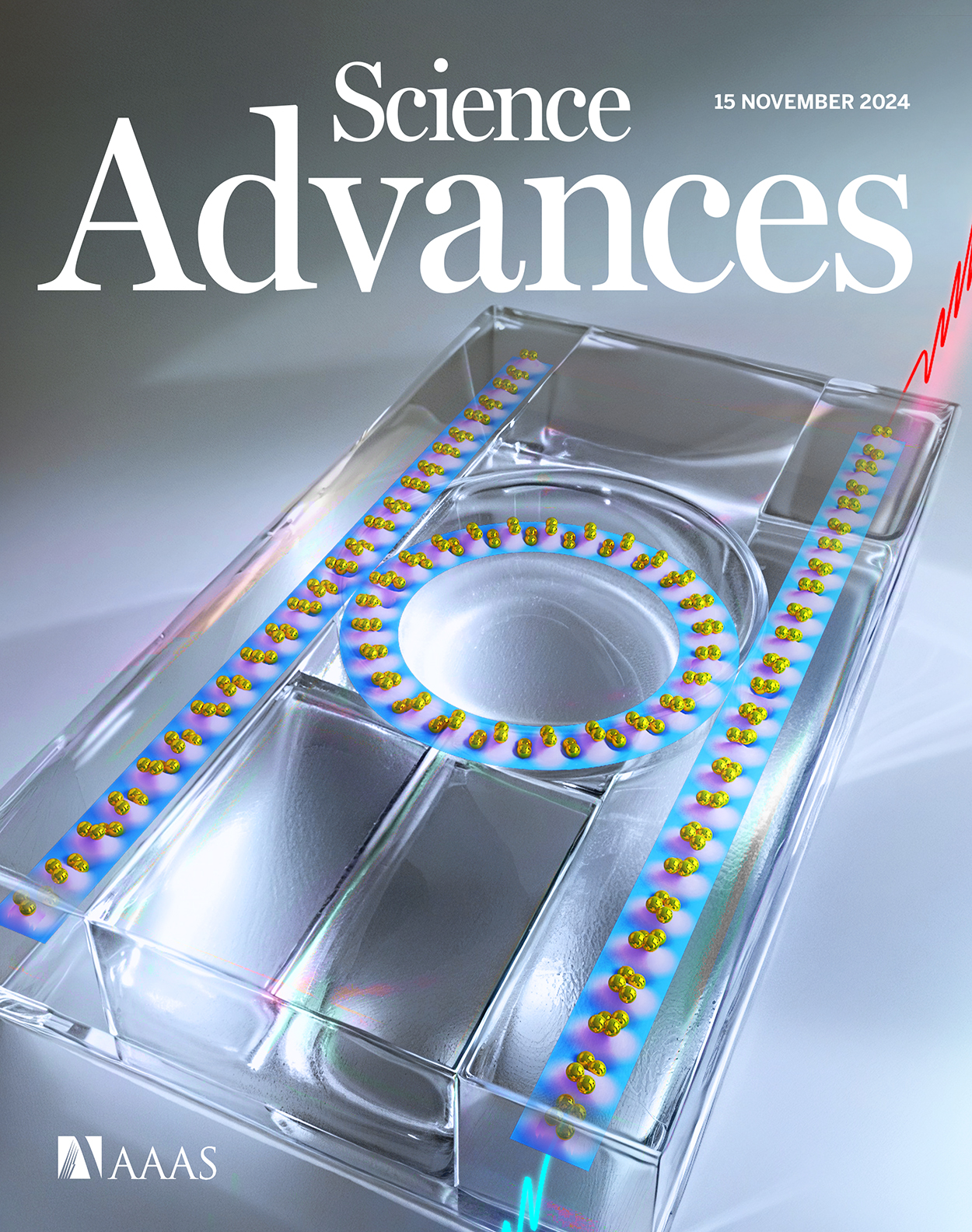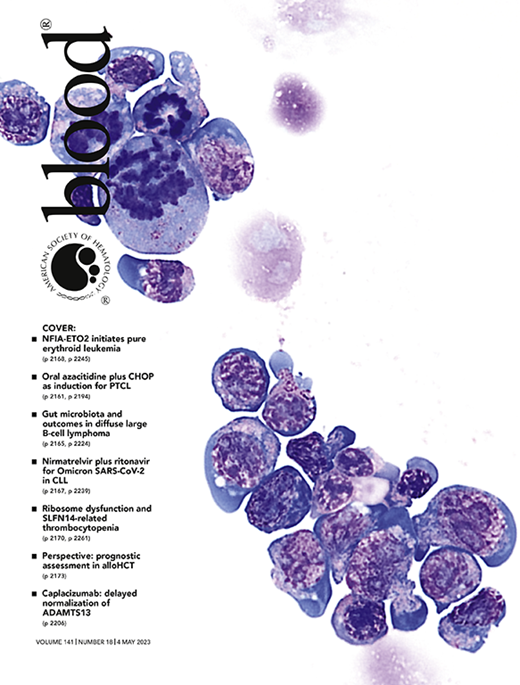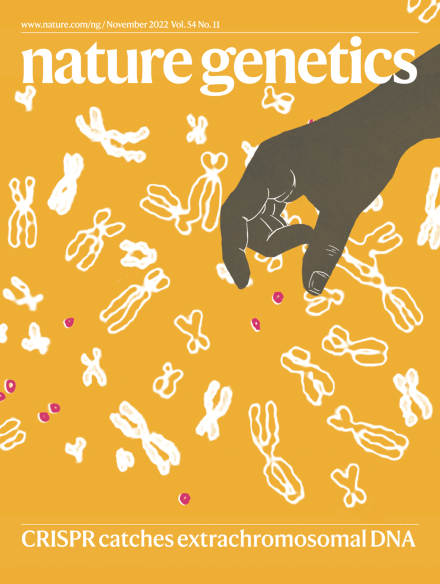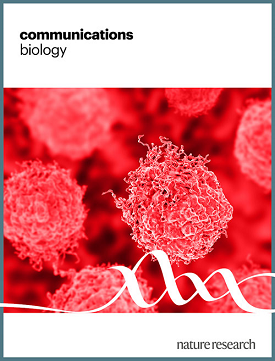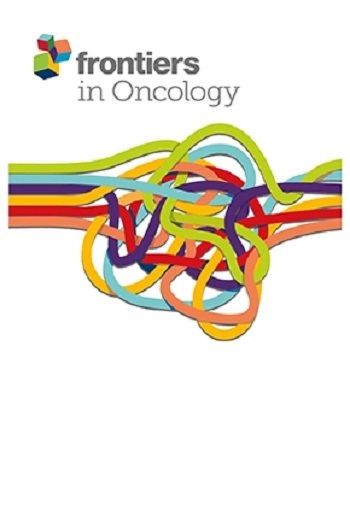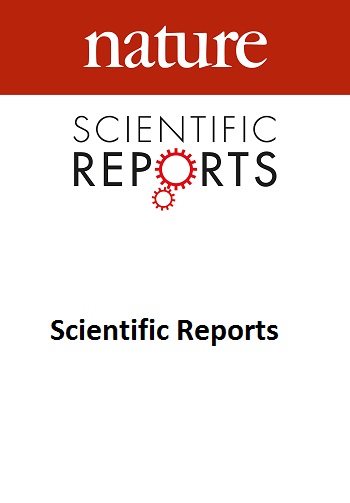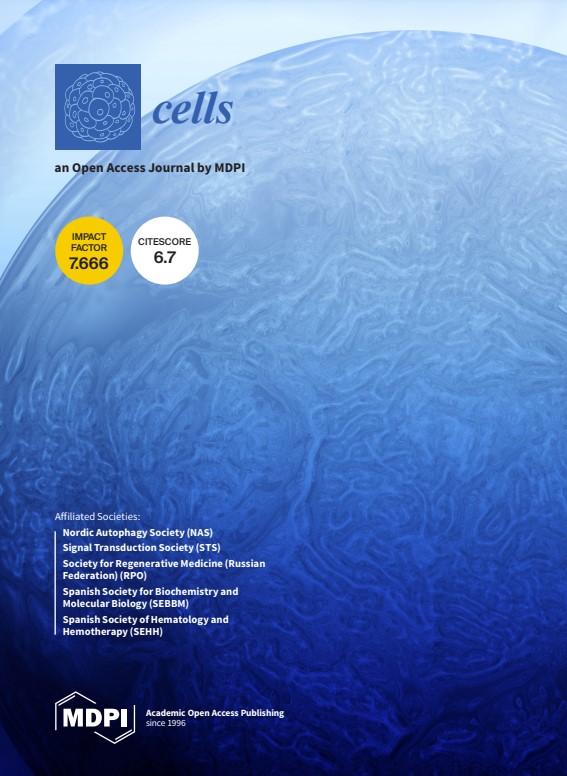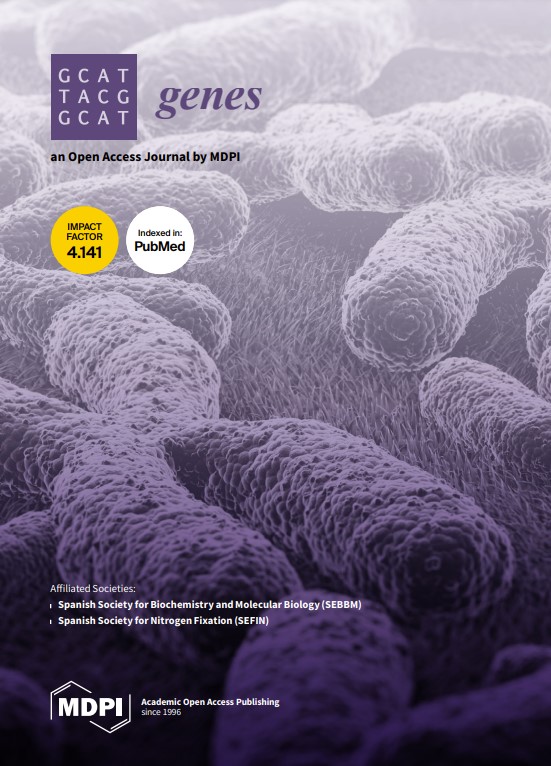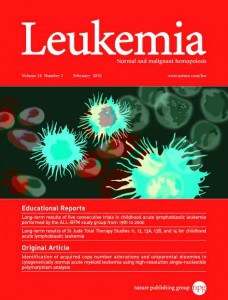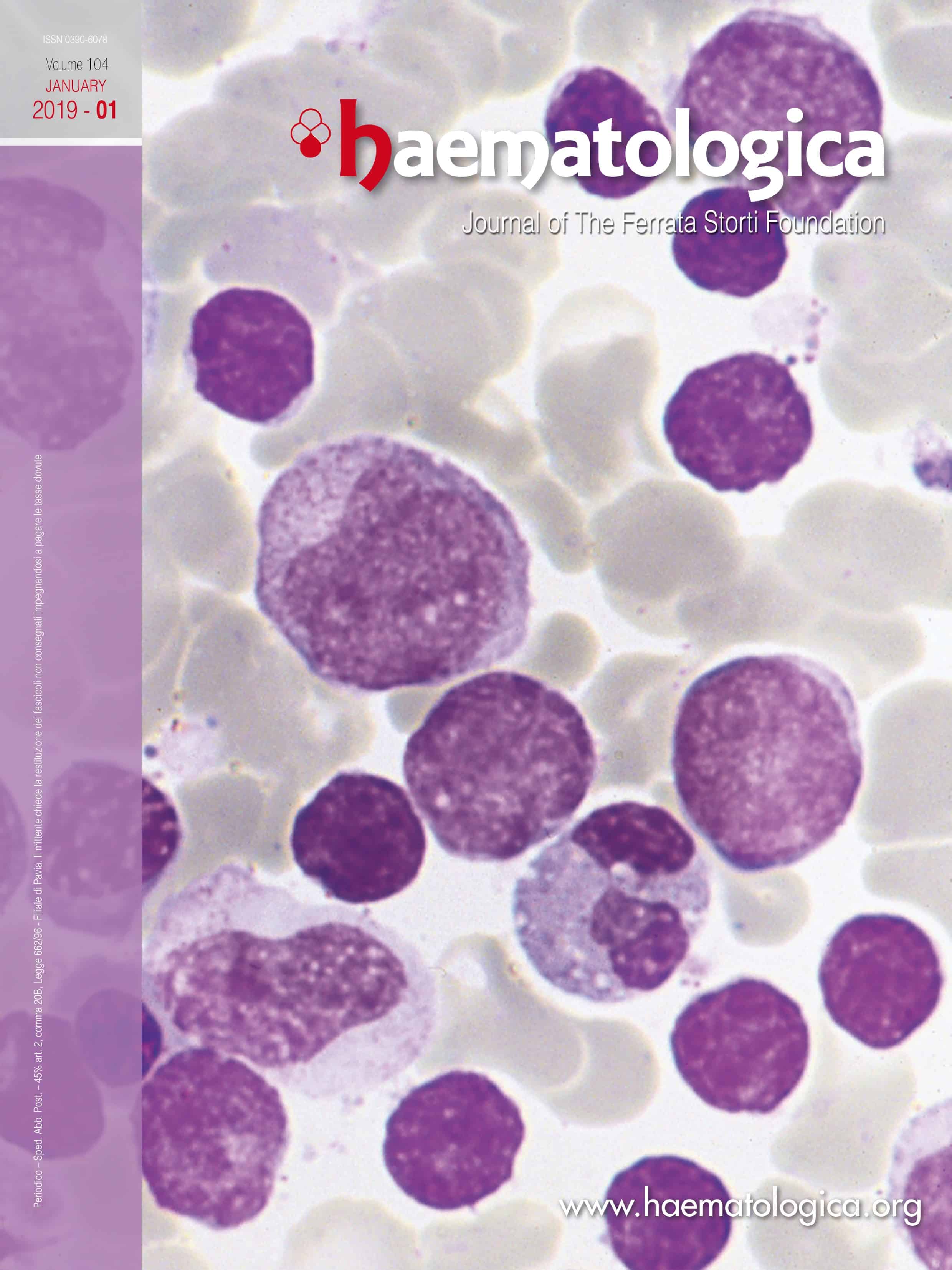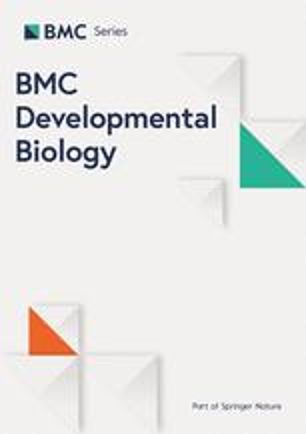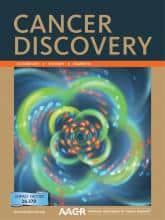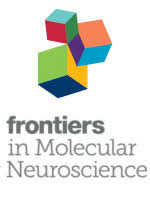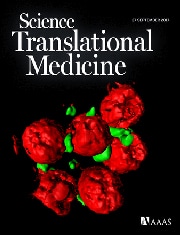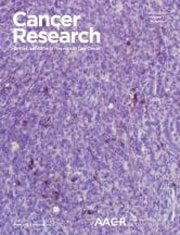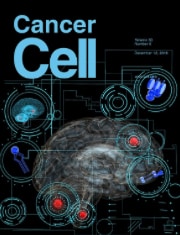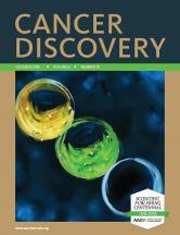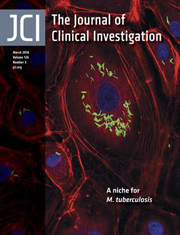Basepair-Powered Analysis In Peer Reviewed Journals
A selection of publications from customers who used Basepair for their NGS analysis.
The HDAC6 inhibitor AVS100 (SS208) induces a pro-inflammatory tumor microenvironment and potentiates immunotherapy
Abstract: Histone deacetylase 6 (HDAC6) inhibition is associated with an increased pro-inflammatory tumor microenvironment and antitumoral immune responses. Here, we show that the HDAC6 inhibitor AVS100 (SS208) had an antitumoral effect in SM1 melanoma and CT26 colon cancer models and increased the efficacy of anti–programmed cell death protein 1 treatment, leading to complete remission in melanoma and increased response in colon cancer. AVS100 treatment increased pro-inflammatory tumor-infiltrating macrophages and CD8 effector T cells with an inflammatory and T cell effector gene signature. Acquired T cell immunity and long-term protection were evidenced as increased immunodominant T cell clones after AVS100 treatment. Last, AVS100 showed no mutagenicity, toxicity, or adverse effects in preclinical good laboratory practice studies, part of the package that has led to US Food and Drug Administration clearance of an investigational new drug application for initiating clinical trials. This would be a first-in-human combination therapy of pembrolizumab with HDAC6 inhibition for locally advanced or metastatic solid tumors.
A Non-canonical enzymatic function of PIWIL4 maintains genomic integrity and leukemic growth in AML
Abstract: RNA-binding proteins (RBPs) form a large and diverse class of factors many members of which are overexpressed in hematological malignancies. RBPs participate in various processes of mRNA metabolism and prevent harmful DNA:RNA hybrids or R-loops. Here we report that PIWIL4, a germ stem cell-associated RBP belonging to the RNase H-like superfamily, is overexpressed in acute myeloid leukemia patients and is essential for leukemic stem cell function and AML growth, but dispensable for healthy human hematopoietic stem cells. In AML cells, PIWIL4 binds to a small number of known piwi-interacting RNA. It instead largely interacts with mRNA annotated to protein-coding genic regions and enhancers that are enriched for genes associated with cancer and human myeloid progenitor gene signatures. PIWIL4 depletion in AML cells downregulates human myeloid progenitor signature and LSC-associated genes and upregulates DNA damage signalling. We demonstrate that PIWIL4 is an R-loop resolving enzyme that prevents R-loop accumulation on a subset of AML and LSC-associated genes, and maintains their expression. It also prevents DNA damage, replication stress, and activation of the ATR pathway in AML cells. PIWIL4 depletion potentiates sensitivity to pharmacological inhibition of the ATR pathway and creates a pharmacologically actionable dependency in AML cells.
Loss of NECTIN1 triggers melanoma dissemination upon local IGF1 depletion.
Abstract: Cancer genetics has uncovered many tumor-suppressor and oncogenic pathways, but few alterations have revealed mechanisms involved in tumor spreading. Here, we examined the role of the third most significant chromosomal deletion in human melanoma that inactivates the adherens junction gene NECTIN1 in 55% of cases. We found that NECTIN1 loss stimulates melanoma cell migration in vitro and spreading in vivo in both zebrafish and human tumors specifically in response to decreased IGF1 signaling. In human melanoma biopsy specimens, adherens junctions were seen exclusively in areas with low IGF1 levels, but not in NECTIN1-deficient tumors. Our study establishes NECTIN1 as a major determinant of melanoma dissemination and uncovers a genetic control of the response to microenvironmental signals.
Abstract Cancer genetics has uncovered many tumor-suppressor and oncogenic pathways, but few alterations have revealed mechanisms involved in tumor spreading. Here, we examined the role of the third most significant chromosomal deletion in human melanoma that inactivates the adherens junction gene NECTIN1 in 55% of cases. We found that NECTIN1 loss stimulates melanoma cell migration in vitro and spreading in vivo in both zebrafish and human tumors specifically in response to decreased IGF1 signaling. In human melanoma biopsy specimens, adherens junctions were seen exclusively in areas with low IGF1 levels, but not in NECTIN1-deficient tumors. Our study establishes NECTIN1 as a major determinant of melanoma dissemination and uncovers a genetic control of the response to microenvironmental signals.
Protocadherin 15 suppresses oligodendrocyte progenitor cell proliferation and promotes motility through distinct signalling pathways.
Abstract: Oligodendrocyte progenitor cells (OPCs) express protocadherin 15 (Pcdh15), a member of the cadherin superfamily of transmembrane proteins. Little is known about the function of Pcdh15 in the central nervous system (CNS), however, Pcdh15 expression can predict glioma aggression and promote the separation of embryonic human OPCs immediately following a cell division. Herein, we show that Pcdh15 knockdown significantly increases extracellular signal-related kinase (ERK) phosphorylation and activation to enhance OPC proliferation in vitro. Furthermore, Pcdh15 knockdown elevates Cdc42-Arp2/3 signalling and impairs actin kinetics, reducing the frequency of lamellipodial extrusion and slowing filopodial withdrawal. Pcdh15 knockdown also reduces the number of processes supported by each OPC and new process generation. Our data indicate that Pcdh15 is a critical regulator of OPC proliferation and process motility, behaviours that characterise the function of these cells in the healthy CNS, and provide mechanistic insight into the role that Pcdh15 might play in glioma progression.
Deletion of murine Rhoh leads to de-repression of Bcl-6 via decreased KAISO levels and accelerates a malignancy phenotype in a murine model of lymphoma
Abstract: RHOH/TFF, a member of the RAS GTPase super family, has important functions in lymphopoiesis and proximal T cell receptor signalling and has been implicated in a variety of leukaemias and lymphomas. RHOH was initially identified as a translocation partner with BCL-6 in non-Hodgkin lymphoma (NHL), and aberrant somatic hypermutation (SHM) in the 5′ untranslated region of the RHOH gene has also been detected in Diffuse Large B-Cell Lymphoma (DLBCL). Recent data suggest a correlation between RhoH expression and disease progression in Acute Myeloid Leukaemia (AML). However, the effects of RHOH mutations and translocations on RhoH expression and malignant transformation remain unknown. We found that aged Rhoh-/- (KO) mice had shortened lifespans and developed B cell derived splenomegaly with an increased Bcl-6 expression profile in splenocytes. We utilized a murine model of Bcl-6 driven DLBCL to further explore the role of RhoH in malignant behaviour by crossing RhohKO mice with Iµ-HABcl-6 transgenic (Bcl-6Tg) mice.
Inhibition of Bromodomain and Extra Terminal (BET) Domain Activity Modulates the IL-23R/IL-17 Axis and Suppresses Acute Graft-Versus-Host Disease.
Abstract: Acute graft-versus-host disease (GVHD) is the leading cause of non-relapse mortality following allogeneic hematopoietic cell transplantation. The majority of patients non-responsive to front line treatment with steroids have an estimated overall 2-year survival rate of only 10%. Bromodomain and extra-terminal domain (BET) proteins influence inflammatory gene transcription, and therefore represent a potential target to mitigate inflammation central to acute GVHD pathogenesis. Using potent and selective BET inhibitors Plexxikon-51107 and -2853 (PLX51107 and PLX2853), we show that BET inhibition significantly improves survival and reduces disease progression in murine models of acute GVHD without sacrificing the beneficial graft-versus-leukemia response. BET inhibition reduces T cell alloreactive proliferation, decreases inflammatory cytokine production, and impairs dendritic cell maturation both in vitro and in vivo. RNA sequencing studies in human T cells revealed that BET inhibition impacts inflammatory IL-17 and IL-12 gene expression signatures, and Chromatin Immunoprecipitation (ChIP)-sequencing revealed that BRD4 binds directly to the IL-23R gene locus. BET inhibition results in decreased IL-23R expression and function as demonstrated by decreased phosphorylation of STAT3 in response to IL-23 stimulation in human T cells in vitro as well as in mouse donor T cells in vivo. Furthermore, PLX2853 significantly reduced IL-23R+ and pathogenic CD4+ IFNγ+ IL-17+ double positive T cell infiltration in gastrointestinal tissues in an acute GVHD murine model. Our findings identify a role for BET proteins in regulating the IL-23R/STAT3/IL-17 pathway. Based on our preclinical data presented here, PLX51107 will enter clinical trial for refractory acute GVHD in a Phase 1 safety, biological efficacy trial.
Aurora kinase A inhibition reverses the Warburg effect and elicits unique metabolic vulnerabilities in glioblastoma.
Abstract: Aurora kinase A (AURKA) has emerged as a drug target for glioblastoma (GBM). However, resistance to therapy remains a critical issue. By integration of transcriptome, chromatin immunoprecipitation sequencing (CHIP-seq), Assay for Transposase-Accessible Chromatin sequencing (ATAC-seq), proteomic and metabolite screening followed by carbon tracing and extracellular flux analyses we show that genetic and pharmacological AURKA inhibition elicits metabolic reprogramming mediated by inhibition of MYC targets and concomitant activation of Peroxisome Proliferator Activated Receptor Alpha (PPARA) signaling. While glycolysis is suppressed by AURKA inhibition, we note an increase in the oxygen consumption rate fueled by enhanced fatty acid oxidation (FAO), which was accompanied by an increase of Peroxisome proliferator-activated receptor gamma coactivator 1-alpha (PGC1α). Combining AURKA inhibitors with inhibitors of FAO extends overall survival in orthotopic GBM PDX models. Taken together, these data suggest that simultaneous targeting of oxidative metabolism and AURKAi might be a potential novel therapy against recalcitrant malignancies.
Human induced pluripotent stem cell derived hepatocytes provide insights on parenteral nutrition associated cholestasis in the immature liver.
Abstract:Parenteral nutrition-associated cholestasis (PNAC) significantly limits the safety of intravenous parenteral nutrition (PN). Critically ill infants are highly vulnerable to PNAC-related morbidity and mortality, however the impact of hepatic immaturity on PNAC is poorly understood. We examined developmental differences between fetal/infant and adult livers, and used human induced pluripotent stem cell-derived hepatocyte-like cells (iHLC) to gain insights into the contribution of development to altered sterol metabolism and PNAC. We used RNA-sequencing and computational techniques to compare gene expression patterns in human fetal/infant livers, adult liver, and iHLC. We identified distinct gene expression profiles between the human feta/infant livers compared to adult liver, and close resemblance of iHLC to human developing livers. Compared to adult, both developing livers and iHLC had significant downregulation of xenobiotic, bile acid, and fatty acid metabolism; and lower expression of the sterol metabolizing gene ABCG8. When challenged with stigmasterol, a plant sterol found in intravenous soy lipids, lipid accumulation was significantly higher in iHLC compared to adult-derived HepG2 cells. Our findings provide insights into altered bile acid and lipid metabolizing processes in the immature human liver, and support the use of iHLC as a relevant model system of developing liver to study lipid metabolism and PNAC.
Lipoprotein Lipase Regulates Microglial Lipid Droplet Accumulation.
Abstract: Microglia become increasingly dysfunctional with aging and contribute to the onset of neurodegenerative disease (NDs) through defective phagocytosis, attenuated cholesterol efflux, and excessive secretion of pro-inflammatory cytokines. Dysfunctional microglia also accumulate lipid droplets (LDs); however, the mechanism underlying increased LD load is unknown. We have previously shown that microglia lacking lipoprotein lipase (LPL KD) are polarized to a pro-inflammatory state and have impaired lipid uptake and reduced fatty acid oxidation (FAO). Here, we also show that LPL KD microglia show excessive accumulation of LD-like structures. Moreover, LPL KD microglia display a pro-inflammatory lipidomic profile, increased cholesterol ester (CE) content, and reduced cholesterol efflux at baseline. We also show reduced expression of genes within the canonical cholesterol efflux pathway. Importantly, PPAR agonists (rosiglitazone and bezafibrate) rescued the LD-associated phenotype in LPL KD microglia. These data suggest that microglial-LPL is associated with lipid uptake, which may drive PPAR signaling and cholesterol efflux to prevent inflammatory lipid distribution and LD accumulation. Moreover, PPAR agonists can reverse LD accumulation, and therefore may be beneficial in aging and in the treatment of NDs.
OneStopRNAseq: A Web Application for Comprehensive and Efficient Analyses of RNA-Seq Data.
Abstract: Over the past decade, a large amount of RNA sequencing (RNA-seq) data were deposited in public repositories, and more are being produced at an unprecedented rate. However, there are few open source tools with point-and-click interfaces that are versatile and offer streamlined comprehensive analysis of RNA-seq datasets. To maximize the capitalization of these vast public resources and facilitate the analysis of RNA-seq data by biologists, we developed a web application called OneStopRNAseq for the one-stop analysis of RNA-seq data. OneStopRNAseq has user-friendly interfaces and offers workflows for common types of RNA-seq data analyses, such as comprehensive data-quality control, differential analysis of gene expression, exon usage, alternative splicing, transposable element expression, allele-specific gene expression quantification, and gene set enrichment analysis. Users only need to select the desired analyses and genome build, and provide a Gene Expression Omnibus (GEO) accession number or Dropbox links to sequence files, alignment files, gene-expression-count tables, or rank files with the corresponding metadata. Our pipeline facilitates the comprehensive and efficient analysis of private and public RNA-seq data.
TET1 promotes growth of T-cell acute lymphoblastic leukemia and can be antagonized via PARP inhibition
Abstract: T-cell acute lymphoblastic leukemia (T-ALL) is an aggressive hematological cancer characterized by skewed epigenetic patterns, raising the possibility of therapeutically targeting epigenetic factors in this disease. Here we report that among different cancer types, epigenetic factor TET1 is highly expressed in T-ALL and is crucial for human T-ALL cell growth in vivo. Knockout of TET1 in mice and knockdown in human T cell did not perturb normal T-cell proliferation, indicating that TET1 expression is dispensable for normal T-cell growth. The promotion of leukemic growth by TET1 was dependent on its catalytic property to maintain global 5-hydroxymethylcytosine (5hmC) marks, thereby regulate cell cycle, DNA repair genes, and T-ALL associated oncogenes. Furthermore, overexpression of the Tet1-catalytic domain was sufficient to augment global 5hmC levels and leukemic growth of T-ALL cells in vivo. We demonstrate that PARP enzymes, which are highly expressed in T-ALL patients, participate in establishing H3K4me3 marks at the TET1 promoter and that PARP1 interacts with the TET1 protein. Importantly, the growth related role of TET1 in T-ALL could be antagonized by the clinically approved PARP inhibitor Olaparib, which abrogated TET1 expression, induced loss of 5hmC marks, and antagonized leukemic growth of T-ALL cells, opening a therapeutic avenue for this disease.
The MicroRNA MiR-196b Acts As Tumor Suppressor In Cdx2 Driven Acute Myeloid Leukemia
Abstract: Acute myeloid leukemia (AML) is characterized by high mortality, underlining the necessity for identifying tumor suppressors which counteract the leukemogenic potential of bona fide oncogenes such as the homeobox genes HOXA9 and CDX2. Homeobox genes are aberrantly expressed in the majority of cytogenetically normal acute myeloid leukemia (CN-AML) patients and expression of CDX2 positively correlates with HOXA9 expression. Aberrant expression of Cdx2 in murine hematopoietic cells rapidly induced aggressive AML in mice. Recently, it has been shown that miR-196 is encoded in the mammalian paralogous HOX gene cluster and that it has extensive evolutionarily conserved complementarity to sites in the 3′ prime untranslated regions (3′ UTRs) of HOX genes (e.g. HOXA9, A7 and B8), directly regulating their expression in MLL-rearranged (MLLr) leukemic cells.
Deletion of Tet proteins results in quantitative disparities during ESC differentiation partially attributable to alterations in gene expression
Abstract: MLL/SET methyltransferases catalyze methylation of histone 3 lysine 4 and play critical roles in development and cancer. We assessed MLL/SET proteins and found that SETD1A is required for survival of acute myeloid leukemia (AML) cells. Mutagenesis studies and CRISPR-Cas9 domain screening show the enzymatic SET domain is not necessary for AML cell survival but that a newly identified region termed the “FLOS” (functional location on SETD1A) domain is indispensable. FLOS disruption suppresses DNA damage response genes and induces p53-dependent apoptosis. The FLOS domain acts as a cyclin-K-binding site that is required for chromosomal recruitment of cyclin K and for DNA-repair-associated gene expression in S phase. These data identify a connection between the chromatin regulator SETD1A and the DNA damage response that is independent of histone methylation and suggests that targeting SETD1A and cyclin K complexes may represent a therapeutic opportunity for AML and, potentially, for other cancers.
β-Catenin Activation Promotes Immune Escape and Resistance to Anti-PD-1 Therapy in Hepatocellular Carcinoma
Abstract: PD-1 immune checkpoint inhibitors have produced encouraging results in hepatocellular carcinoma (HCC) patients. However, what determines resistance to anti-PD-1 therapies is unclear. We created a novel genetically-engineered mouse model of HCC that enables interrogating how different genetic alterations affect immune surveillance and response to immunotherapies. Expression of exogenous antigens in MYC;p53-/- HCCs led to T cell-mediated immune surveillance, which was accompanied by decreased tumor formation and increased survival. Some antigen-expressing MYC;p53-/- HCCs escaped the immune system by upregulating β-catenin (CTNNB1) pathway. Accordingly, expression of exogenous antigens in MYC;CTNNB1 HCCs had no effect, demonstrating that β-catenin promoted immune escape, which involved defective recruitment of dendritic cells and consequently, impaired T cell activity. Expression of chemokine Ccl5 in antigen-expressing MYC;CTNNB1 HCCs restored immune surveillance. Finally, β-catenin-driven tumors were resistant to anti-PD-1. In summary, β-catenin activation promotes immune escape and resistance to anti-PD-1 and could represent a novel biomarker for HCC patient exclusion.
Cell-Specific Transcriptome Analysis Shows That Adult Pillar and Deiters’ Cells Express Genes Encoding Machinery for Specializations of Cochlear Hair Cells
Abstract: The mammalian auditory sensory epithelium, the organ of Corti, is composed of hair cells and supporting cells. Hair cells contain specializations in the apical, basolateral and synaptic membranes. These specializations mediate mechanotransduction, electrical and mechanical activities and synaptic transmission. Supporting cells maintain homeostasis of the ionic and chemical environment of the cochlea and contribute to the stiffness of the cochlear partition. While spontaneous proliferation and transdifferentiation of supporting cells are the source of the regenerative response to replace lost hair cells in lower vertebrates, supporting cells in adult mammals no longer retain that capability. An important first step to revealing the basic biological properties of supporting cells is to characterize their cell-type specific transcriptomes. Using RNA-seq, we examined the transcriptomes of 1,000 pillar and 1,000 Deiters’ cells, as well as the two types of hair cells, individually collected from adult CBA/J mouse cochleae using a suction pipette technique. Our goal was to determine whether pillar and Deiters’ cells, the commonly targeted cells for hair cell replacement, express the genes known for encoding machinery for hair cell specializations in the apical, basolateral, and synaptic membranes. We showed that both pillar and Deiters’ cells express these genes, with pillar cells being more similar to hair cells than Deiters’ cells. The fact that adult pillar and Deiters’ cells express the genes cognate to hair cell specializations provides a strong molecular basis for targeting these cells for mammalian hair cell replacement after hair cells are lost due to damage.
Involvement of signal peptidase I in Streptococcus sanguinis biofilm formation
Abstract: Biofilm accounts for 65-80 % of microbial infections in humans. Considerable evidence links biofilm formation by oral microbiota to oral disease and consequently systemic infections. Streptococcus sanguinis, a Gram-positive bacterium, is one of the most abundant species of the oral microbiota and it contributes to biofilm development in the oral cavity. Due to its altered biofilm formation, we investigated a biofilm mutant, ΔSSA_0351, that is deficient in type I signal peptidase (SPase) in this study. Although the growth curve of the ΔSSA_0351 mutant showed no significant difference from that of the wild-type strain SK36, biofilm assays using both microtitre plate assay and confocal laser scanning microscopy (CLSM) confirmed a sharp reduction in biofilm formation in the mutant compared to the wild-type strain and the paralogous mutant ΔSSA_0849. Scanning electron microscopy (SEM) revealed remarkable differences in the cell surface morphologies and chain length of the ΔSSA_0351 mutant compared with those of the wild-type strain. Transcriptomic and proteomic assays using RNA sequencing and mass spectrometry, respectively, were conducted on the ΔSSA_0351 mutant to evaluate the functional impact of SPase on biofilm formation. Subsequently, bioinformatics analysis revealed a number of proteins that were differentially regulated in the ΔSSA_0351 mutant, narrowing down the list of SPase substrates involved in biofilm formation to lactate dehydrogenase (SSA_1221) and a short-chain dehydrogenase (SSA_0291). With further experimentation, this list defined the link between SSA_0351-encoded SPase, cell wall biosynthesis and biofilm formation.
A Non-catalytic Function of SETD1A Regulates Cyclin K and the DNA Damage Response
Abstract: MLL/SET methyltransferases catalyze methylation of histone 3 lysine 4 and play critical roles in development and cancer. We assessed MLL/SET proteins and found that SETD1A is required for survival of acute myeloid leukemia (AML) cells. Mutagenesis studies and CRISPR-Cas9 domain screening show the enzymatic SET domain is not necessary for AML cell survival but that a newly identified region termed the “FLOS” (functional location on SETD1A) domain is indispensable. FLOS disruption suppresses DNA damage response genes and induces p53-dependent apoptosis. The FLOS domain acts as a cyclin-K-binding site that is required for chromosomal recruitment of cyclin K and for DNA-repair-associated gene expression in S phase. These data identify a connection between the chromatin regulator SETD1A and the DNA damage response that is independent of histone methylation and suggests that targeting SETD1A and cyclin K complexes may represent a therapeutic opportunity for AML and, potentially, for other cancers.
Science Translational Medicine, Vol. 9, Issue 409
Christine I Wooddell, Man-Fung Yuen, Henry Lik-Yuen Chan, et al. (2017)
RNAi-based treatment reveals that integrated hepatitis B virus DNA is a source of HBsAg
Abstract: Chronic hepatitis B virus (HBV) infection is a major health concern worldwide, frequently leading to liver cirrhosis, liver failure, and hepatocellular carcinoma. Evidence suggests that high viral antigen load may play a role in chronicity. Production of viral proteins is thought to depend on transcription of viral covalently closed circular DNA (cccDNA). In a human clinical trial with an RNA interference (RNAi)–based therapeutic targeting HBV transcripts, ARC-520, HBV S antigen (HBsAg) was strongly reduced in treatment-naïve patients positive for HBV e antigen (HBeAg) but was reduced significantly less in patients who were HBeAg-negative or had received long-term therapy with nucleos(t)ide viral replication inhibitors (NUCs). HBeAg positivity is associated with greater disease risk that may be moderately reduced upon HBeAg loss. The molecular basis for this unexpected differential response was investigated in chimpanzees chronically infected with HBV. Several lines of evidence demonstrated that HBsAg was expressed not only from the episomal cccDNA minichromosome but also from transcripts arising from HBV DNA integrated into the host genome, which was the dominant source in HBeAg-negative chimpanzees. Many of the integrants detected in chimpanzees lacked target sites for the small interfering RNAs in ARC-520, explaining the reduced response in HBeAg-negative chimpanzees and, by extension, in HBeAg-negative patients. Our results uncover a heretofore underrecognized source of HBsAg that may represent a strategy adopted by HBV to maintain chronicity in the presence of host immunosurveillance. These results could alter trial design and endpoint expectations of new therapies for chronic HBV.
Histone acetyltransferase activity of MOF is required for MLL- AF9 leukemogenesis
Abstract: Chromatin-based mechanisms offer therapeutic targets in acute myeloid leukemia (AML) that are of great current interest. In this study, we conducted an RNAi-based screen to identify druggable chromatin regulator-based targets in leukemias marked by oncogenic rearrangements of the MLL gene. In this manner, we discovered the H4K16 histone acetyltransferase (HAT) MOF to be important for leukemia cell growth. Conditional deletion of Mof in a mouse model of MLL-AF9-driven leukemogenesis reduced tumor burden and prolonged host survival. RNA sequencing showed an expected downregulation of genes within DNA damage repair pathways that are controlled by MOF, as correlated with a significant increase in yH2AX nuclear foci in Mof-deficient MLL-AF9 tumor cells. In parallel, Mof loss also impaired global H4K16 acetylation in the tumor cell genome. Rescue experiments with catalytically inactive mutants of MOF showed that its enzymatic activity was required to maintain cancer pathogenicity. In support of the role of MOF in sustaining H4K16 acetylation, a small molecule inhibitor of the HAT component MYST blocked the growth of both murine and human MLL-AF9 leukemia cell lines. Furthermore Mof inactivation suppressed leukemia development in a NUP98-HOXA9 driven AML model. Taken together, our results establish that the HAT activity of MOF is required to sustain MLL-AF9 leukemia and may be important for multiple AML subtypes. Blocking this activity is sufficient to stimulate DNA damage, offering a rationale to pursue MOF inhibitors as a targeted approach to treat MLL-rearranged leukemias.
ASXL2 is essential for haematopoiesis and acts as a haploinsufficient tumour suppressor in leukemia
Abstract: Additional sex combs-like (ASXL) proteins are mammalian homologues of additional sex combs (Asx), a regulator of trithorax and polycomb function in Drosophila. While there has been great interest in ASXL1 due to its frequent mutation in leukemia, little is known about its paralog ASXL2, which is frequently mutated in acute myeloid leukemia patients bearing the RUNX1-RUNX1T1 (AML1-ETO) fusion. Here we report that ASXL2 is required for normal haematopoiesis with distinct, non-overlapping effects from ASXL1 and acts as a haploinsufficient tumour suppressor. While Asxl2 was required for normal haematopoietic stem cell self-renewal, Asxl2 loss promoted AML1-ETO leukemogenesis. Moreover, ASXL2 target genes strongly overlapped with those of RUNX1 and AML1-ETO and ASXL2 loss was associated with increased chromatin accessibility at putative enhancers of key leukemogenic loci. These data reveal that Asxl2 is a critical regulator of haematopoiesis and mediates transcriptional effects that promote leukemogenesis driven by AML1-ETO.
KMT2C directs estrogen receptor activity in normal and transformed mammary cells
Abstract: Estrogen receptor alpha (ERα) is a ligand-activated nuclear receptor that regulates proliferation and differentiation in mammary epithelial cells. ERα activity is likely dependent on the actions of pioneer factors and H3K4 methyltransferases which can establish a genomic landscape permissive for ERα binding. Here, we identify the H3K4 methyltransferase KMT2C as essential for ERα activity in mammary gland development and ER+ breast cancer growth. KMT2C suppression decreases estrogen-dependent gene expression and causes H3K4me1 loss at ERα target gene enhancers. Consequently, KMT2C loss selectively suppresses estrogen-driven breast cancer proliferation. Moreover, mammary-specific Kmt2c knockout mice have defects in pubertal ductal formation similar to Esr1 deficient mice. Although KMT2C loss disrupts estrogen-driven proliferation, it conversely promotes tumor outgrowth under hormone-depleted conditions. Consistent with this, gene expression signatures of KMT2C loss are associated with poor outcomes. We conclude that KMT2C is a key regulator of ERα activity whose loss uncouples mammary phenotypes from hormone availability.
NUP98 fusion proteins interact with the NSL and MLL1 complexes to drive leukemogenesis
Abstract: The nucleoporin 98 gene (NUP98) is fused to a variety of partner genes in multiple hematopoietic malignancies. Here, we demonstrate that NUP98 fusion proteins, including NUP98-HOXA9 (NHA9), NUP98-HOXD13 (NHD13), NUP98-NSD1, NUP98-PHF23, and NUP98-TOP1 physically interact with mixed lineage leukemia 1 (MLL1) and the non-specific lethal (NSL) histone-modifying complexes. Chromatin immunoprecipitation sequencing illustrates that NHA9 and MLL1 co-localize on chromatin and are found associated with Hox gene promoter regions. Furthermore, MLL1 is required for the proliferation of NHA9 cells in vitro and in vivo. Inactivation of MLL1 leads to decreased expression of genes bound by NHA9 and MLL1 and reverses a gene expression signature found in NUP98-rearranged human leukemias. Our data reveal a molecular dependency on MLL1 function in NUP98-fusion-driven leukemogenesis.
Targeting chromatin regulators inhibits leukemogenic gene expression in NPM1 mutant leukemia
Abstract: Homeobox (HOX) proteins and the receptor tyrosine kinase FLT3 are frequently highly expressed and mutated in acute myeloid leukemia (AML). Aberrant HOX expression is found in nearly all AMLs that harbor a mutation in the Nucleophosmin (NPM1) gene, and FLT3 is concomitantly mutated in approximately 60% of these cases. Little is known about how mutant NPM1 (NPM1mut) cells maintain aberrant gene expression. Here, we demonstrate that the histone modifiers MLL1 and DOT1L control HOX and FLT3 expression and differentiation in NPM1mut AML. Using a CRISPR/Cas9 genome editing domain screen, we show NPM1mut AML to be exceptionally dependent on the menin binding site in MLL1. Pharmacologic small-molecule inhibition of the menin–MLL1 protein interaction had profound antileukemic activity in human and murine models of NPM1mut AML. Combined pharmacologic inhibition of menin–MLL1 and DOT1L resulted in dramatic suppression of HOX and FLT3 expression, induction of differentiation, and superior activity against NPM1mut leukemia.
MLL-AF9–and HOXA9-mediated acute myeloid leukemia stem cell self-renewal requires JMJD1C
Abstract: Self-renewal is a hallmark of both hematopoietic stem cells (HSCs) and leukemia stem cells (LSCs); therefore, the identification of mechanisms that are required for LSC, but not HSC, function could provide therapeutic opportunities that are more effective and less toxic than current treatments. Here, we employed an in vivo shRNA screen and identified jumonji domain–containing protein JMJD1C as an important driver of MLL-AF9 leukemia. Using a conditional mouse model, we showed that loss of JMJD1C substantially decreased LSC frequency and caused differentiation of MLL-AF9– and homeobox A9–driven (HOXA9-driven) leukemias. We determined that JMJD1C directly interacts with HOXA9 and modulates a HOXA9-controlled gene-expression program. In contrast, loss of JMJD1C led to only minor defects in blood homeostasis and modest effects on HSC self-renewal. Together, these data establish JMJD1C as an important mediator of MLL-AF9– and HOXA9-driven LSC function that is largely dispensable for HSC function.
Is NGS analysis something you’ve never done yourself? Maybe you’re worried you’ll make a mistake? We totally get it. That’s why Basepair offers personalized support for all users. Our bioinformaticians are happy to answer your questions via chat 5 days a week. Take advantage of our no-commitment trial — you just may be pleasantly surprised at what you can do with the right tools.
Researchers at Top Universities Trust Basepair
“Fast, excellent and reasonably priced…you CAN get all three!! Thank you to the folks at Basepair for helping us deal with some difficult RNA Seq data.”
“I really like how easy the website is to use. And how quickly the results are generated, including figures. I would have never thought about doing a new analysis like I just did.”
“Support answers come fast and are always precise!”

